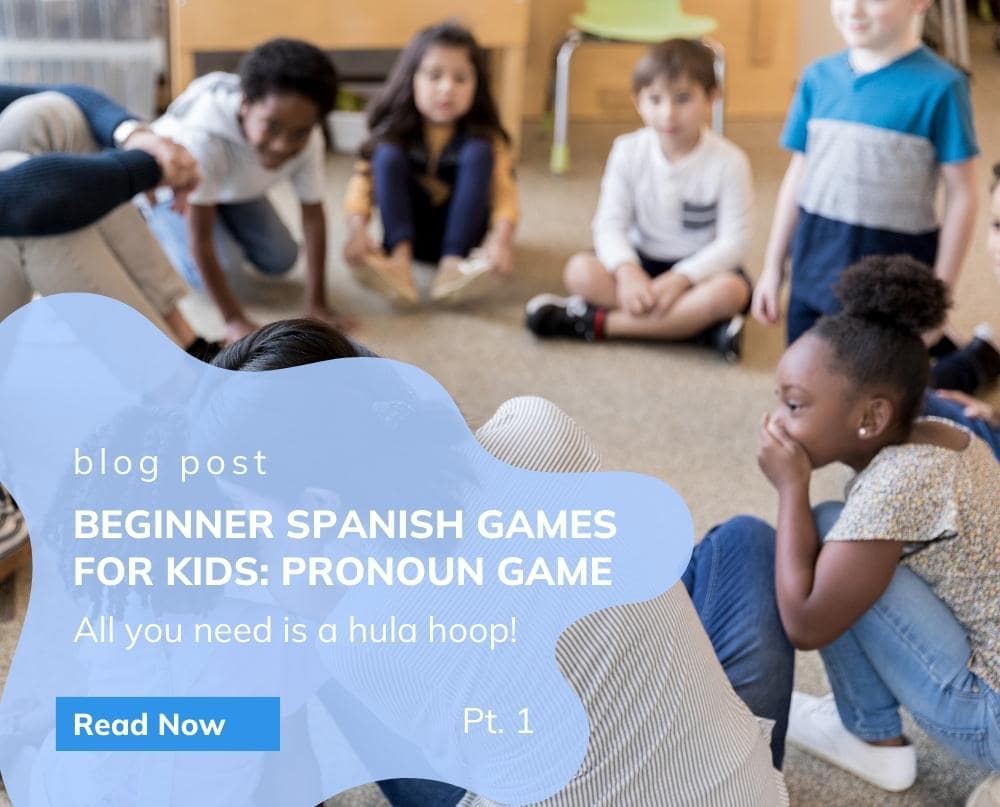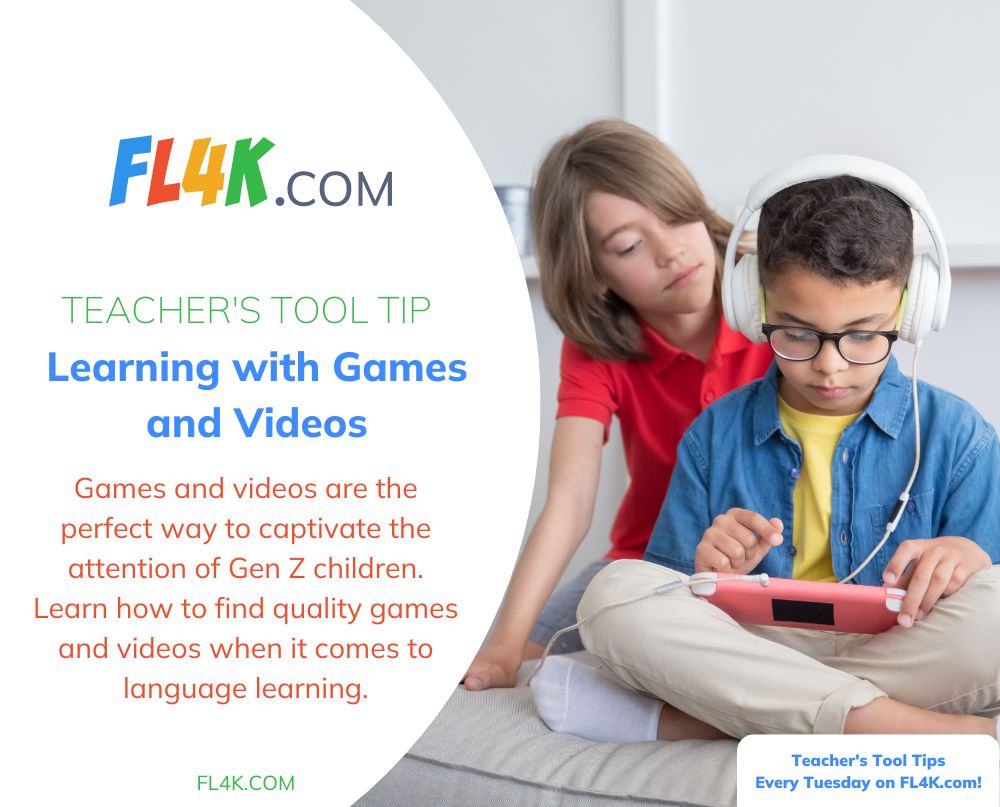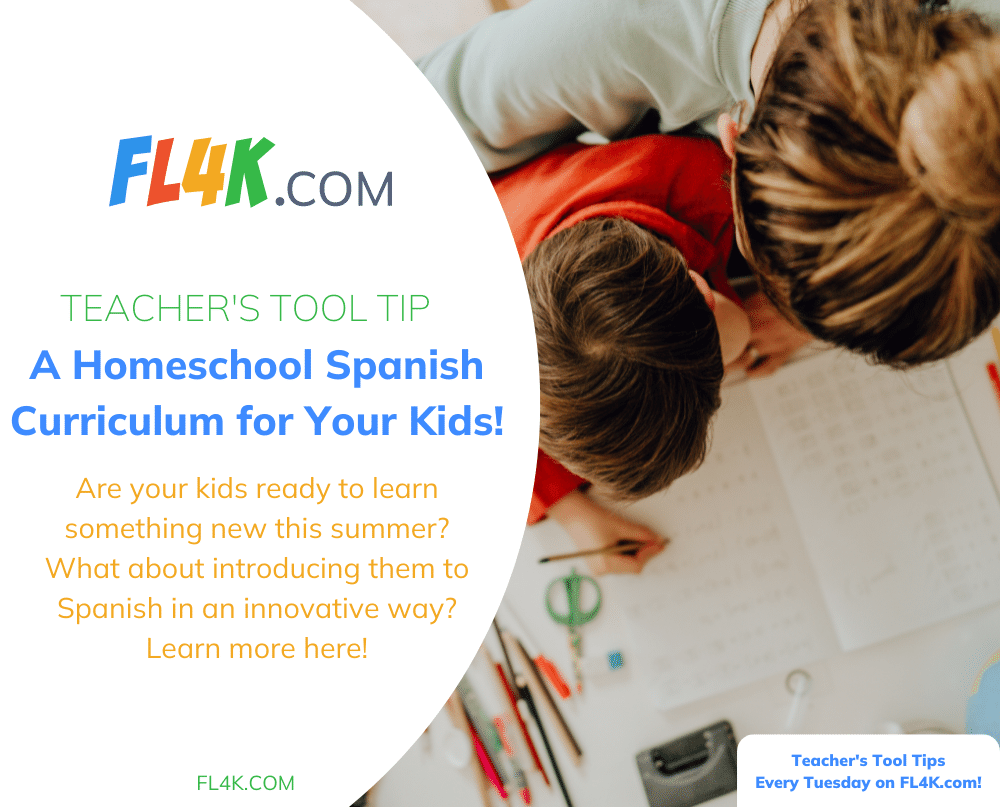Game Time!
Fun and quick 5-10 minute games that will teach your students to speak Spanish
Today, we’re back with the next level of our pronoun game! We still have a couple more levels to finish this game, but, for now, we’ll get right into this week’s level!
If you missed Part 1 or Part 2 of this game, you’ll want to go back and go through step by step to get a feel of how this game is played and to build up your student’s skills in order to get to this point.
If you’ve followed along the last two weeks, you should be noticing that the pronouns your students learned so far have become automatic and natural to them! By using activities like this game and others, students will stop thinking about the Spanish words as they become more comfortable with them.
Well, if you’re ready for more, let’s jump in!
Pronoun Game
Part 3
Learning objective
Students will learn and use two new Spanish personal pronouns: “Ella” (girl), “Él” (boy)
⏲ Time needed
< 5 minutes
✏️✂️ Materials needed
A timer or stopwatch.
👩👧👦 Ages
For anyone who is game to play! Learning in an active and different way helps everyone remember the Spanish vocabulary long-term.
Instructions (for a large group or class)
Step 1
Split the class into two teams. Pick one student to volunteer to help the teacher judge and time the teams.
Step 2
Have each team sit in a row parallel to the other team. The teacher and volunteer judge will stand at the front, each with one team to judge and time. In each team, the student at the front end of each row will stand up first and face the rest of their row.
Step 3
The teacher starts the timer and the student at the front of the row will go down the line, pointing at each student, saying either él (boy) or ella (girl). The student will need to go through the line as quickly as possible without getting one wrong. If the student makes an error, they will need to go back to the front of the row and start again.
Once the student successfully reaches the end of the line, he will sit down in the back, and the next student will go down the line, ending with the first student. After all the students have gone through, the team with the fastest speed wins!
Pro Tip: For an uneven amount of students per team, have two students referee the teams.
Instructions (for small groups)
Step 1
Have the kids all sit in one row with the parent or teacher at the front with the timer. The child at the front of the row will stand up and face the row of kids.
Pro Tip: For very small groups or for a single student, stuffed animals, dolls, and photos can also be used as stand-ins!
Step 2
The child standing and facing the row of kids or stand-ins will go down the line, pointing at each student, saying either él (boy) or ella (girl). The child will need to go through the line as quickly as possible without getting one wrong. If the child makes an error, they will need to go back to the front of the row and start again.
Step 3
Once the child successfully reaches the end of the line, he will sit down in the back, and the parent will stop the timer and mark the speed. Once ready, the next child will go down the line, ending with the first child. After all the children have gone through, the child with the fastest speed wins!
For one child using stand-ins, the child can repeat the line until no mistakes are made – and then until he can beat that time!
Have your students practice él and ella to prepare for next week: ellos and ellas! We’ll see you then!




